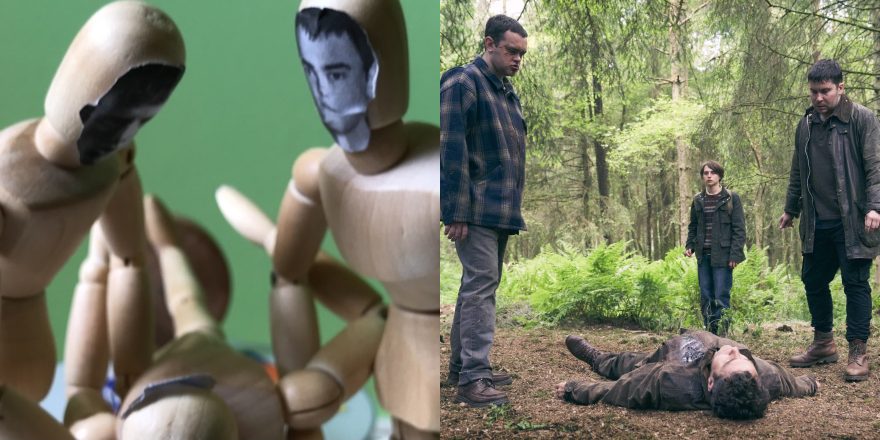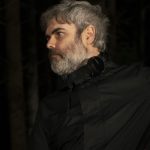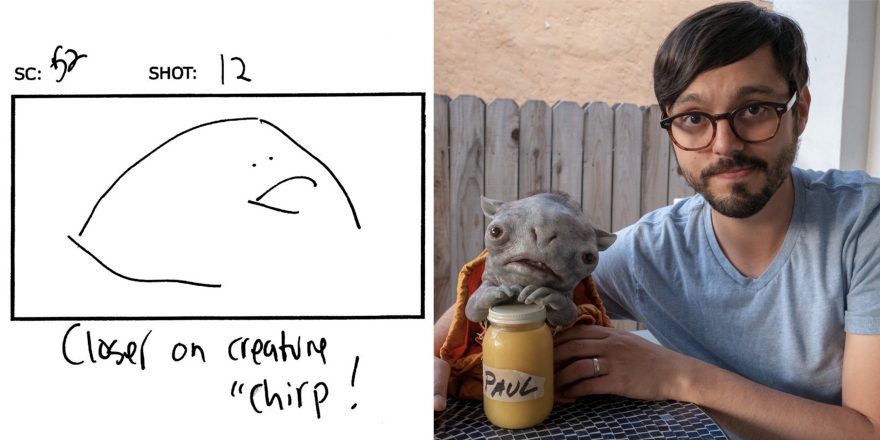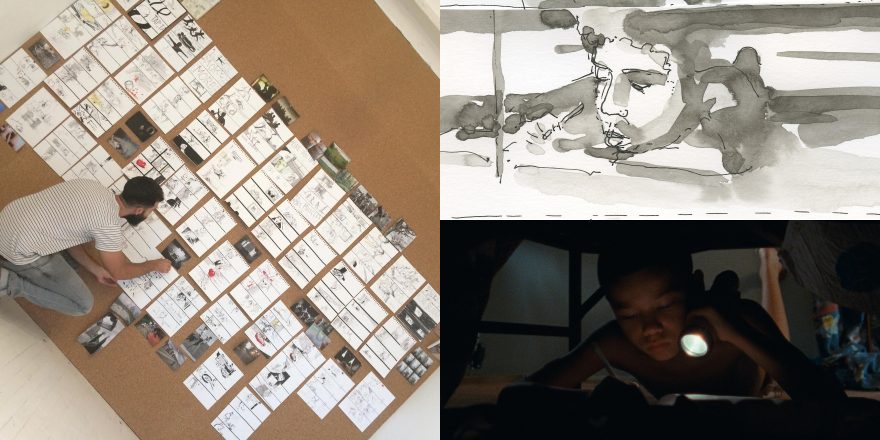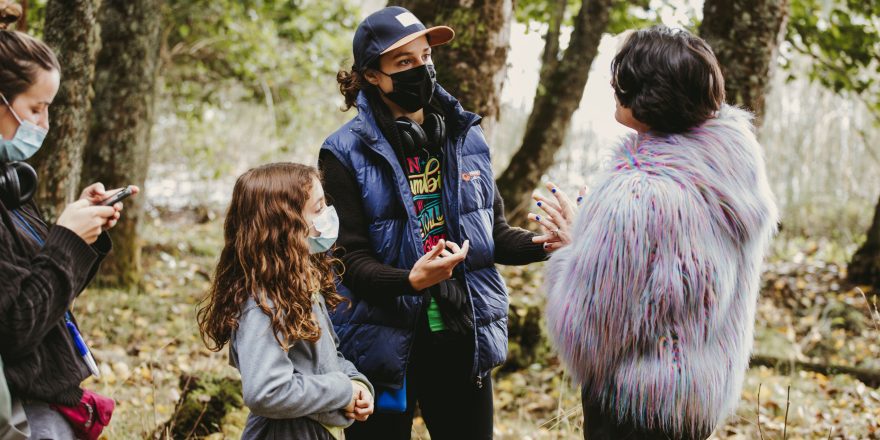When I first became a film director, I set out to be as prepared as possible. I was warned that directing could become quite chaotic, so I figured storyboards and planning ahead had to be a priority.
James Cameron is highly skilled at drawing. When making The Terminator, he drew a picture of the main character and when crew members saw this picture, they “got” who the Terminator was by this one hand-drawn image. They understood the tone of the story, all because of some pencils and paper. It’s an amazing piece of work in its own right.
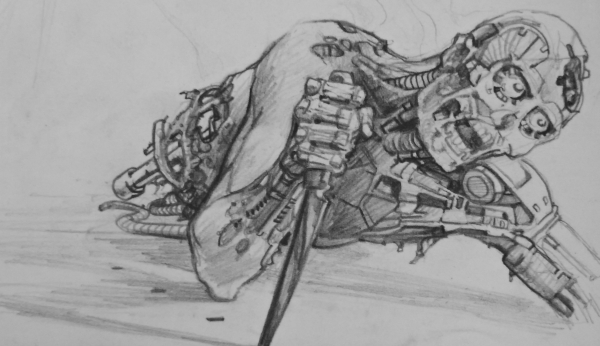
I knew I’d never get to that level. But at least I had to try, right?
There’s just one problem. I can’t draw for shit! Feast your eyes below.
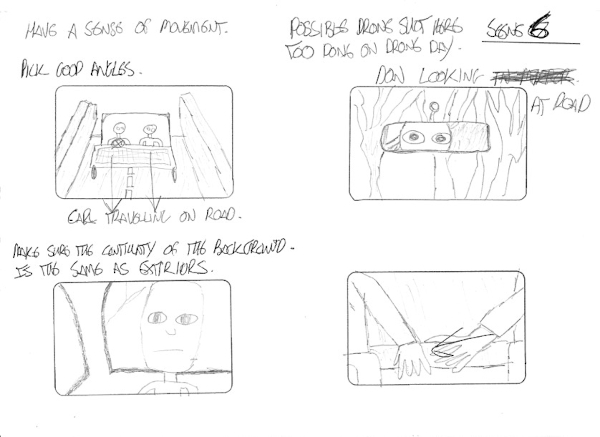
My wife said these look like David Shrigley drawings. But I could never master how to draw things in 3D. My sister was a good artist; I just never got the gift. When we were kids, she once got a painting displayed on Tony Hart’s drawing TV program Hartbeat. It was a pretty big deal in our family. I decided to procrastinate by going on a YouTube ’80s TV nostalgia buzz and watching some episodes of Hartbeat, instead of doing any actual storyboard work.
On Hartbeat, there is a stop-motion character named Morph. He was a bit of a rascal in the world of art. A mini human-shaped form that could change into any shape. Watching him, I realized I needed my own Morph, a physical “character” that I could manipulate and take photos of. To play out the scenes on the kitchen table, I needed multiple Morphs.
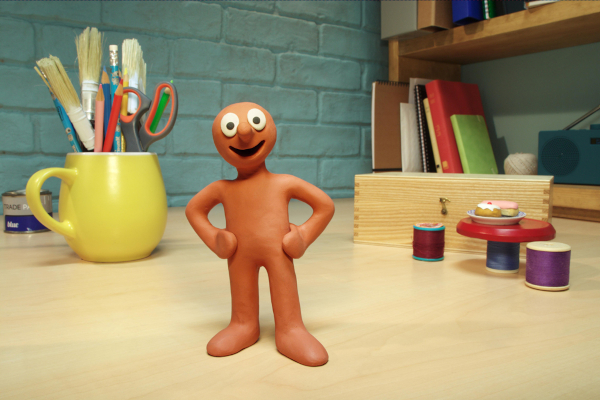
I bought a set of artist’s lay figures, which could be manipulated in different positions and help block out the scenes. Actors: check.
On my iPhone, I had the cinematography viewfinder app Artemis. With it, you can take pictures in different aspect ratios. 2:39 camera: check.
So, I was good to go. It was crude, but it worked. In a way. With cotton wool buds for rifles. And a clean takeaway container for a wooden table. I used this method for shooting the proof-of-concept short for my new movie, Betrayal.
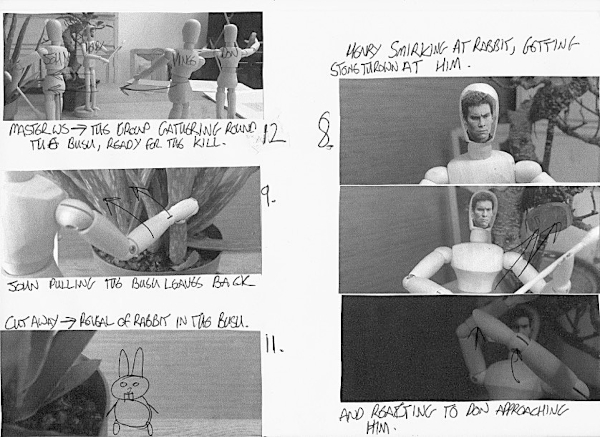
Fast-forward five years to the feature version of Betrayal. There was much more to be storyboarded. I indulged myself by buying Action Man hunting rifles from eBay for £3.89. But the artist lay figures were here to stay.
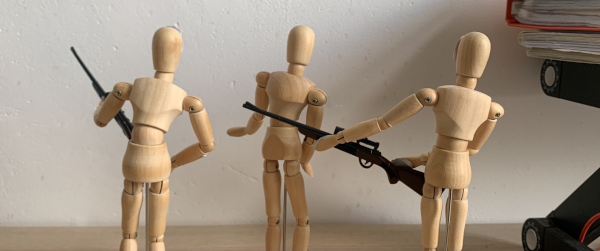
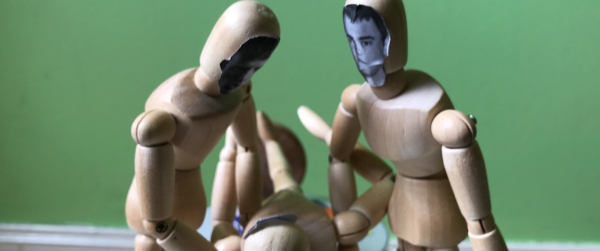
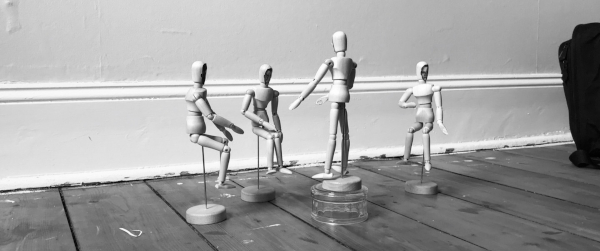
The whole process of learning to storyboard from scratch takes time. At first, the images I created were crude and basic, but slowly they got better. I honed the process over several years, whenever I found I could take time away from the day job to do it. I had to put Blu-Tack on the lay figures’ hands so they could hold their rifles securely, and my new cat kept attacking them, as she thought it was some sort of elaborate game we were playing.
Through the process, I added other tools to the workflow, such as the graphics app Procreate. With this, I managed to figure out how to take an outline of the figures and place them into a scene and background, how to get across camera movement, and framing how characters move within the frame. I used red arrows for character movement and green arrows for camera movement.
I wanted the film’s visual style to be naturalistic, but still cinematic in terms of framing and how the characters moved within the scene. The subtext of these images tells the story, or shows the characters’ psychological state of mind. One film I referenced a lot when doing the storyboards was Prisoners. It felt as though every shot in that film had a lot of thought put into it when it came to symbolism or a character’s inner life.
My storyboarding took absolutely ages to complete, however the majority of this work was during the pandemic, so I had more spare time than usual. I got about 80 percent of the film storyboarded, but I just couldn’t visualize the rest.
As we edged closer to production, the chaos began. In preproduction, everything is still uncertain, until the first day of the shoot – crew, cast, locations, finance, Covid insurance! All these things need your full attention, but it’s good fun, too. The storyboarding had to take a back seat while other problems needed to be addressed.
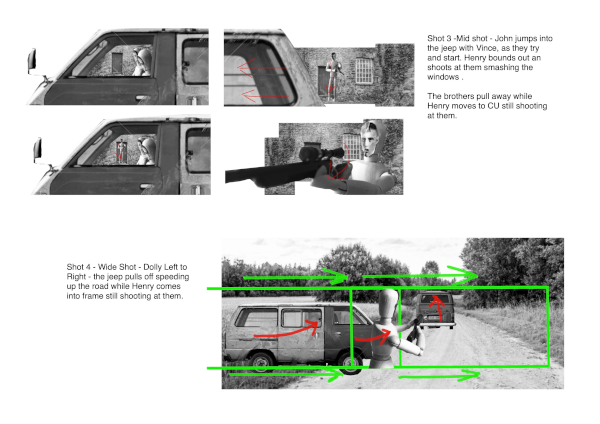
When everyone assembled and the camera rolled, the production schedule was tight, but I was thrilled we were shooting Betrayal. Producers Claire Mundell and Lee Brazier fought hard to get this film made; backing a first-time, no-name director is a risk. They made a lot of sacrifices to get it over the line. After all this, I think of them more as people I care about than just producers.
The storyboards became a great tool in helping convey a scene to everyone, a jumping-off point. Sometimes we recreated exactly what I had storyboarded, but sometimes we improved upon it, or we found a different way to make it work.
When we made changes, contributions from the film’s heads of department were essential. Our amazing director of photography Alasdair Boyce worked quickly and skilfully, and our locations manager, Tom Gentle, reshaped the way we saw certain scenes with the inspired locations he brought us. Sometimes practicality took over from creativity, as when our producer and line producer Shona MacKenzie had to figure out how we were going to film a deer, as the shoot was during rutting (mating) season!
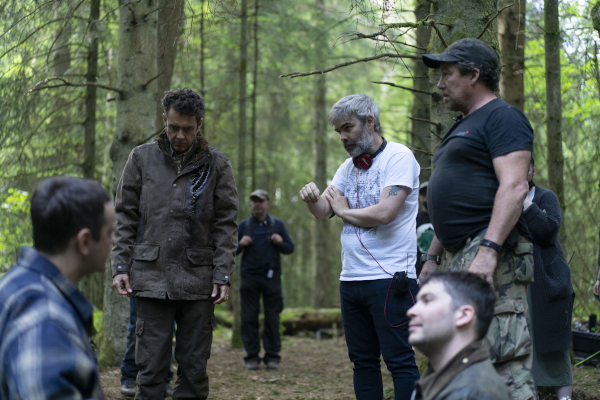
Directing is creative, but it’s also about problem solving, how you can make something work with the same initial intention. Claire Mundell, one of our producers, called it “lateral thinking” and that’s what we all did.
By the end of the film, I was spent.
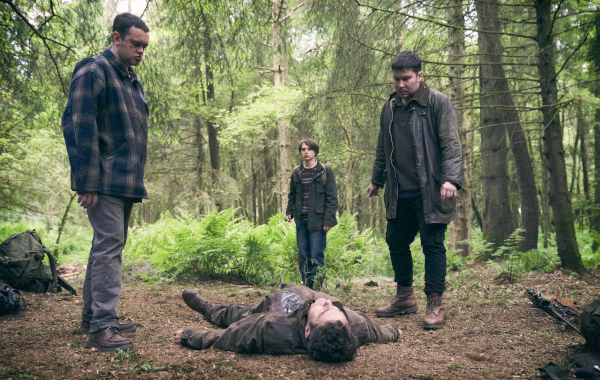
Were the storyboards worth it? 100 percent. If there were differences in the end, doing all the groundwork gave me a clear idea of what I needed to get to tell the story. In hindsight, I think I got really lucky with the cast and crew, and that’s how we truly pulled it off.
Would it be better if someone could draw storyboards for me?
Maybe, but I actually ended up enjoying the process, so I’m keeping hold of my stick people.


